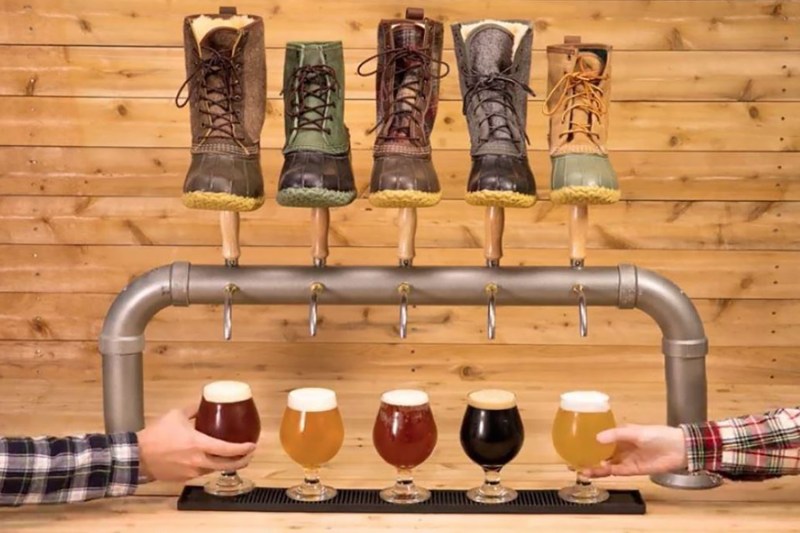Beer and the outdoors go together well. To celebrate the launch of its fall line of Small Batch Bean Boots, outdoor gear-maker L.L. Bean teamed up with five Maine craft breweries to make a limited run of outdoor-inspired craft brews that complement the autumn collection.
L.L. Bean launched the campaign and a contest (more on that in a bit) with a post to social media showing the boots “on tap.” While we would never want any of my boots that close to a drink, the new boots look bomb(er) and the beer delicious.
https://www.instagram.com/p/BozsALtjyK0/
Every season, L.L. Bean introduces limited sets of custom Bean Boots, all made in Maine. In 1912, Leon Leonwood made the first Maine Hunting Shoe, now the L.L. Bean Boot, to stay warm and dry in the Maine woods. Over a century later, Small Batch Bean Boots get fresh styling every season while maintaining the iconic functionality and quality.
Just as the Bean Boot has become iconic for Maine, so has craft brewing. When L.L. Bean put out the call for outdoor-inspired craft brews, five local breweries stood out: Fogtown, Rising Tide, Orono, Threshers and Mast Landing.

- Fogtown Brewing Co. of Ellsworth is brewing the Wonderland Acadian Pale Ale, a herbal ale infused with sweet fern and bog myrtle at 5.5 percent alcohol by volume.
- Rising Tide of Portland is brewing the Drift American Ale, a tart ale with local sumac at 4.2 percent ABV.
- Orono Brewing Co. of Orono and Bangor is brewing The Way Life Should Be IPA, a triple dry-hopped IPA with 100-percent Maine grown grain at 6 percent ABV.
- Threshers Brewing Co. of Searsmont is brewing Knife’s Edge IPA, a malty IPA with a woodsy profile and hints of caramel at 8 percent ABV.
- Mast Landing Brewing Co. of Westbrook is brewing 100 Mile Wilderness Stout, a stout with flavors of peanuts, chocolate, and cranberries at 5.4 percent ABV.
To celebrate the launch, L.L. Bean is offering a free pair of boots and a gift bag of goodies from the breweries. To enter, share a photo of you, or your friends, or family:
- wearing L.L.Bean boots,
- experiencing the outdoors,
- and enjoying one of your favorite craft beers.
Share your photo on Twitter, or Instagram using the hashtags #BeanBootsandBrews and #Contest. Get more info and official contest rules here.


